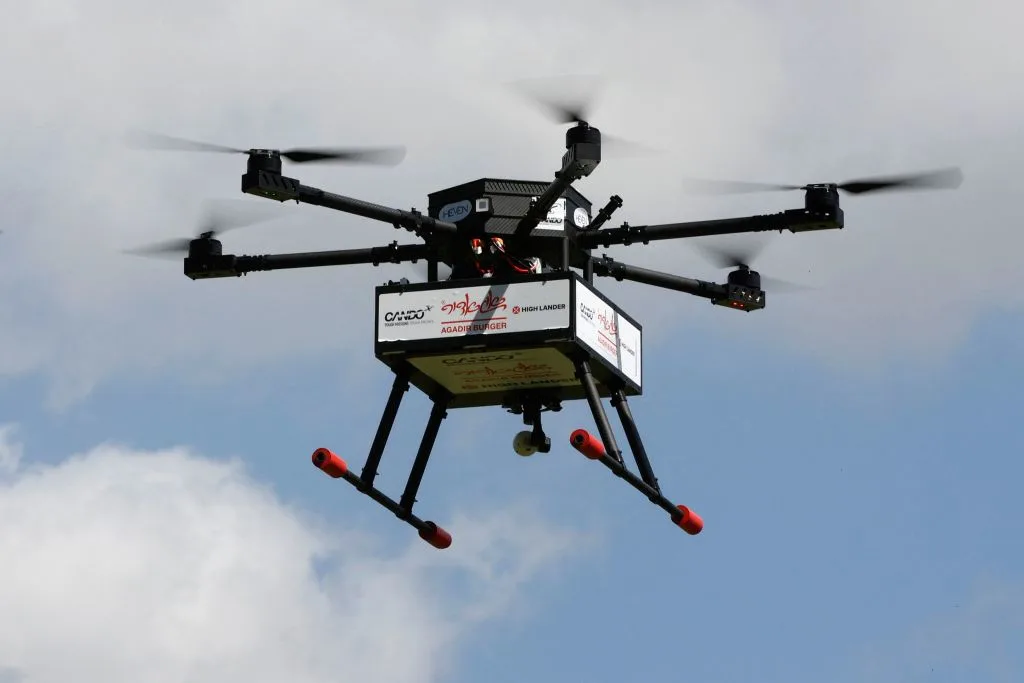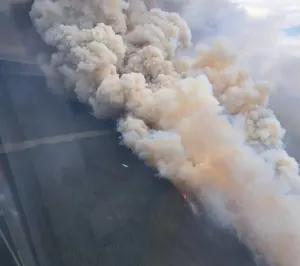
Drone technology offers surprising new ways to tackle climate change
From reducing emissions during “last-mile” deliveries to fighting wildfires, drones could be an intriguing tool in a warming world.
Drones zooming parcels and packages right to customers’ homes could become a replacement for the countless delivery trucks currently on the road, reducing greenhouse gas emissions along the way.
A recent study determined that over short distances, such as from a local warehouse to a nearby urban area, drones required far less energy and produced far fewer emissions than the diesel-fueled trucks often used for deliveries today.
The drones tested in the research used more than 90 per cent less energy and produced more than 80 per cent less emissions than their traffic-bound counterparts.
“Our study shows that drones can provide a substantial reduction in CO2e emissions by reducing the energy consumption of small package deliveries,” Carnegie Mellon researcher Thiago Rodrigues, a lead author of the study, told The Weather Network (TWN).
“Drones can have up to 94 per cent lower energy consumption than other vehicles, resulting in a decrease of 84 per cent in CO2 emissions per package delivered,” Rodrigues added. “Moreover, in regions where electricity comes from clean (renewable) sources, drones also help reduce GHG emissions by electrifying the delivery sector and avoiding the combustion of fossil fuels.”

Energy consumption and CO2e emissions — otherwise known as carbon dioxide equivalents — of different delivery vehicles. (Thiago Rodrigues/ Patterns)
The study comes on the heels of an announcement earlier this summer by delivery monolith Amazon that it would begin a program called “Prime Air,” in which drones would carry packages weighing no more than five pounds to customers in Lockeford, California, from a warehouse about 15 miles away.
When the company first floated this vision back in 2015, controversy ensued, with outcries from a concerned public and predictions of failure from critics. But in 2020, the American Federal Aviation Administration (FAA) granted the company drone-delivery certification.
Because of its historical links to the aviation industry, Lockeford was chosen as the testing ground for the new service.
With companies like Walmart and Walgreens recently joining the game, drones may soon become the norm in the delivery sector — with the entire drone market predicted to triple to $43 billion over the next few years — so long as various obstacles are overcome.

Energy consumption and CO2e emissions of different delivery vehicles. (Thiago Rodrigues/ Patterns)
The primary concern has been safety. But Amazon has promised “a sophisticated sense-and-avoid system that will enable operations without visual observers and allow our drone to operate at greater distances while safely and reliably avoiding other aircraft, people, pets, and obstacles.”
And though Transport Canada stipulates that drones must not fly within about six kilometres of an airport, the Edmonton International Airport was given approval to launch a trial to offer drone delivery of packages for companies like Apple Express. The program became commercially operational this summer.
Yet other challenges to the widespread use of drones remain.
“Drones have limited payload and battery capacity, which restricts the use of drones for small packages to be delivered at relatively short distances,” Rodrigues explained.
“From regulatory aspects, drones are constrained regarding geographical areas, operating times, and autonomy levels, which considerably limits drone use for some applications,” Rodrigues added.
“Improving aircraft design, providing supporting infrastructure, such as charging stations, and reviewing aerospace legislation are important steps to overcome these obstacles.”
Watch below: How crypto emissions undermine goals to tackle climate change
Some of these obstacles are falling as the utility of drones becomes apparent in critical sectors.
Drones have been employed in tasks like tracking the spread of wildfires, counting the population of certain threatened species, or determining the state of shrinking coral reefs–key tools for responding to climate impacts.
In the future, drones may be entrusted with various tasks other involved with fighting climate change or saving people from its impacts. But for now their most important contribution is still the chance to slow emissions by taking more gas-guzzlers off the road.
“As we gain know-how on these operations, drones will become part of our lives,” Rodrigues said, “providing a delivery option that is faster and cleaner.”
Thumbnail image: This picture taken on March 17, 2021 in the Israeli coastal city of Hadera shows an unmanned aerial vehicle (UAV, or drone) carrying fast food deliveries (hamburgers) as part of the main demonstration performed by the companies who won the tender for this project. (JACK GUEZ/AFP via Getty Images)










